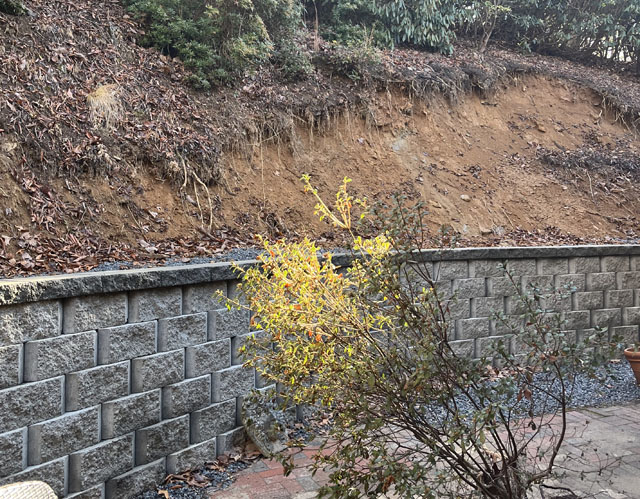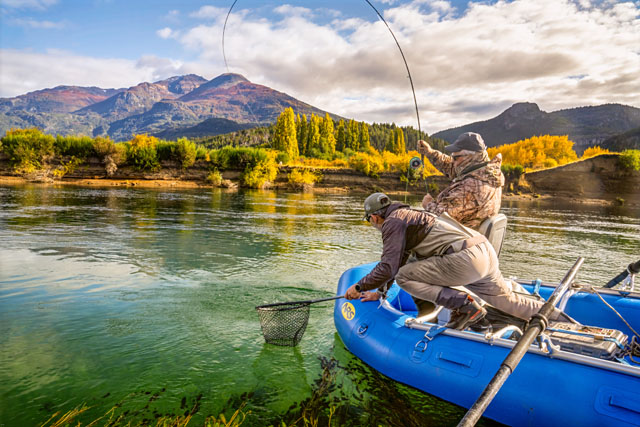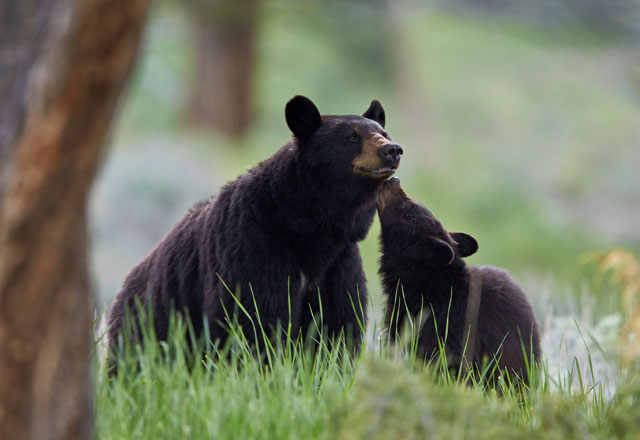Avoiding A Slippery Slope
02 Aug 2025
How to mitigate landslides in Western North Carolina
August-September 2025
Written By: By PAMELA JOUAN | Images: Photos by Steve Pettis, NC State Extension

With numerous steep slopes and heavy rainfall, the Cashiers-Highlands Plateau—perched at 3,855 feet above sea level—presents unique landscaping challenges, particularly in dealing with landslides. Besides the regular amount of yearly rainfall experienced here, the plateau remains vulnerable to severe and catastrophic weather events, such as Hurricane Helene. To mitigate landslides, Minda Daughtry, NC State Extension Master Gardener, says that “It all starts with understanding how things work.”
The Western North Carolina mountains offer undeniable beauty and a sought-after climate, which drives dense development for homes, trails, and resorts. But elevation, acidic and stony soils, and aggressive slope grades (often between 15% to 50%) combine to create a fragile landscape where poor planning can have cascading consequences.
“You can't just throw in some plants and hope for the best,” Daughtry warns. “Think of it as a domino effect—many systems impacting each other. Kick one out of alignment, and the rest stop working.”
Good Data Makes for Sound Decisions
“It’s not just dirt,” according to Daughtry. The soil on the plateau has certain basic underlying characteristics that local homeowners need to keep in mind. It’s fragile, which means its highly susceptible to erosion when disturbed. It’s infertile and not ideal for agricultural purposes. It’s typically acidic, with a pH range of 3.5 to 5.5. Lastly, it’s stony, which means it contains a high amount of rock material. Additionally, every square foot of mountain terrain is its own little ecosystem. “Understanding your land means understanding your climate and microclimates—wind tunnels, sunlight angles, water pathways—and making peace with the forces of gravity and chemistry.”
In particular, when acidic rocks are displaced or exposed to water (especially during construction), they trigger chemical reactions that form sulfuric acid, a destructive force to both plant life and slope stability.
Daughtry’s advice? Check geological surveys in your area before you buy. “The North Carolina Geological Survey (NCGS) has all kinds of maps and information on reducing landscape risk. If you don’t know how to access them, call your extension agent in that county, and they can help you.” This help includes identifying water sources, drainage patterns, flood zones, and understanding where your watershed is located.
Another suggestion from Daughtry: soil testing. “Residents in North Carolina should take advantage of free soil analysis from April through November through the NC Agronomic Lab in Raleigh (ncagr.gov/divisions/agronomic-services/soil-testing/homeowners). The test will reveal soil pH, fertility, and recommendations based on what you plan to grow—foundational knowledge needed to make the right plant selections, so you know before you grow.”
Then comes the fun part: plant matchmaking. Daughtry points to tools like the NC Extension Gardener Plant Toolbox (plants.ces.ncsu.edu), where you can filter by soil type, sun/wind exposure and more. But Daughtry cautions, “You can get lost in there for hours!” Additionally, consider your wildlife expectations. “Some people want to encourage wildlife, others not so much.” What you select to grow can significantly impact your expectations.
Gravity Works and Water Wins
Even though soil is the subject matter here, Daughtry reminds us “everything changes with water and time.” She stresses the need to use intentional planting and intelligent landscaping such as terracing, contour planting and rain gardens to enhance water infiltration, optimize water distribution and reduce runoff velocity.
Daughtry concedes that the weather has become unpredictable. Patterns have shifted. “We get warmer sooner. This year, in agriculture here, the growing period is ahead by 11 days.” While North Carolina isn’t traditionally associated with “atmospheric rivers”—those narrow bands of moisture that can dump massive rainfall—they are becoming increasingly relevant in the Southern Appalachians, particularly in fall.
“We’ve seen heavy precipitation events connected to systems around the Blue Ridge Escarpment,” Daughtry explains. “They act like pots of boiling water—steam rising, swirling and coming back down hard.”
This new normal, where extreme rainfall can hit suddenly and with force, highlights the need for intelligent landscape designs that manage water before it becomes a problem. It's not just about controlling soil—it's about slowing, dispersing and absorbing water.
Why Fall is the Smartest Time to Plant
Conventional wisdom may say “spring is for planting,” but in Western North Carolina, fall planting can be a real power move, especially on slopes.
Fall offers a stress-reducing environment for young plants. Daughtry asks us to consider their growing obstacles, starting with transplant shock, even if they were properly replanted. Then there’s heat stress and humidity that can create fungal pathogens. Cooler temperatures can help mitigate some of these natural stressors and allow the plants to establish strong roots in time for winter.
Bottom Line: Plan for Resilience
In the end, Daughtry says intelligent landscaping decisions are about ensuring resilience, not just aesthetics. That means understanding that every decision—what you plant, where you build, how you manage water—affects a broader system. It’s not just about dirt or pretty flowers but how everything works together—soil, climate, plants, wildlife. It’s about making sure that one domino is not out of place.
Her final takeaway? “Get curious.” Think critically. Match your plants like you’re matchmaking for success. And never forget—water wins if you let it.
And that might be the smartest approach to slope gardening yet.













